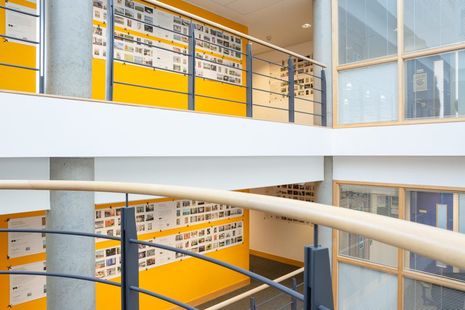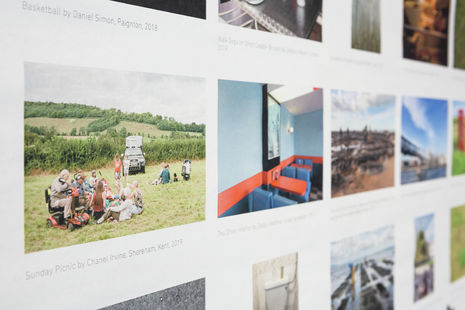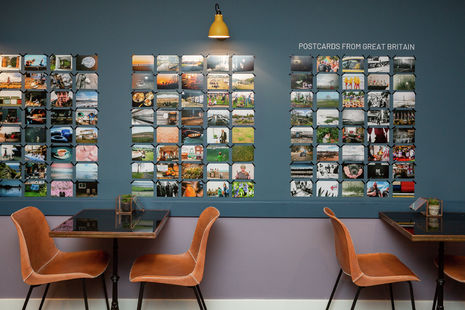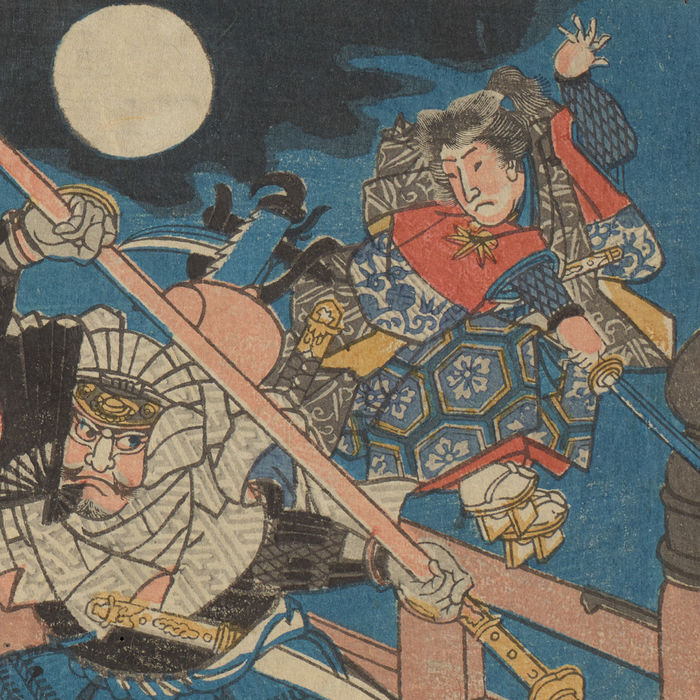Postcards from Europe
Amelia Reeves writes on this striking exhibition taking place in the Alison Richard Building on Sidgwick Site

First going into the ARB two weeks ago, it reminded me a little of my fridge at home: both are crammed with postcards. From more traditional tourist fare to family memories, the new exhibition Postcards from Europe celebrates the postcard in all its diverse forms, highlighting its potential for social connection across physical and cultural borders. The exhibition has been curated by Shutter Hub, and features the work of over 150 photographers working across Europe in the period 2016 to 2020. It is alternately termed Postcards from Europe and Great Britain as it features around 200 images from their prior Postcards from Great Britain exhibitions, as well as several hundred new inclusions.
“This exhibition also invites a deliberation over how we engage with photography and its role in society”
The postcard is a form of art that almost all of us will have had encountered. As a child, sending and receiving postcards was a small joy and a moment of pride, sharing a holiday memory through a beach snap with the obligatory ‘wish you were here’. At Cambridge, the shops abound with picture-perfect chapel shots, one of which I dutifully sent to my grandparents in my first week here. Like any other postcard, the images in the exhibition are snapshots of moments and memories, intertwined through travel with the places at which they were taken.

The exhibition’s stated aim is ‘to share aspects of European culture, spanning all genres of photography, and collating images that include social, political, historical, traditional and observational responses.’ The images therefore vary broadly in composition and are not grouped by theme, so each panel features a set of unique scenes; from ruins in Rhodes to a kitchen worktop in Berlin, traditional ‘marvels’ and everyday scenes are represented equally. There are images exploring interaction with art, for example Werner Mansholt’s shot of a man viewing paintings where he almost blends in with the subjects depicted. The most persistent theme is human interest, whether Sam Davies’ portrait shots of skiers in the Lechtal Valley or a family gathering in Bulgaria captured by Iliyana Grigorova.
“The postcard is a form of art that almost all of us will have had contact with”
This was an inadvertently timely exhibition, with COVID both taking its toll on holidays and imposing general physical distance. COVID looms large in the images literally and figuratively, from Giuseppe Francavilla’s taped-off bench in Rome to Judith Parrott’s lonely chair in La Palma. Some unique shots are made possible by the desertion of city centres in 2020, but monuments devoid of tourists feel almost eerie, especially among a corpus of images which focus so heavily on connection and exchange.

While some are more akin to postcards you might buy, many of the postcards are deliberately and uniquely personal, a window into the photographer’s life and experiences. By inviting reflection on postcards, this exhibition invites consideration of image-sharing more generally. For me, choosing a postcard from a school trip was serious business. Will future schoolchildren have the same issue? Nowadays, although I do send postcards on occasion, most of my image sharing is done via social media, which is certainly much quicker and sometimes much cheaper. Seeing the physical postcards forces a reconsideration, because physical photos are that much more deliberate. The process of choosing one image to represent a trip, a place, or a group of people, rather than sending a Whatsapp barrage, is significant to the photographer’s memory and relationship to the postcard receiver. Linked with images like Mansholt’s, then, this exhibition also invites a deliberation over how we engage with photography and its role in society.
“The exhibition’s panels feel almost like a collaborative camera roll”
The staging of the exhibition was troubled substantially by the pandemic, but Shutter Hub found unique ways to take advantage of the situation too. Originally, the plan was to exhibit images from Great Britain in 20 different locations across Europe, beginning with the Lion d’Or Hotel in Haarlem. When this could no longer take place, they planned pop-up exhibitions with groups within countries organising themselves to ‘share some great photography in unexpected places’. This permitted the scale of the exhibition to expand substantially, with contributors welcomed from across Europe, the results of which are now at the ARB.
Hosting Postcards from Europe is the most recent project of ‘Art at the ARB’, a voluntary committee which also held an online exhibition last year. The exhibition is open to all between 9am and 7pm on weekdays, and is staged across four floors of the ARB; it can also be glimpsed through the glass at the entrance of the ARC Cafe. Leaflets are available on the bottom floor which explain the exhibition and Shutter Hub’s involvement. Shutter Hub intended the display style to be ‘accessible and communicative’ — panels are printed on newspaper sheets and affixed to the walls with black tape. Integrated among desks and break spaces, they provide an opportunity for prolonged engagement with the photos in a relaxed setting.
Put together, the exhibition’s panels feel almost like a collaborative camera roll, highlighting daily experience, culture and society across Europe, and the diverse creative approaches of the photographers exhibited. The production of the images, their selection and their display form a dialogue on the nature of life and art, facilitated equally by the postcard as a medium. Far from the contrived and sometimes garish postcards we (or I) might remember, this exhibition encourages an appreciation for how photography has always helped us to connect with one another.
‘Postcards from Europe’ is running at the Alison Richard Building until the 25th February. You can also see the exhibition in its entirety online.
 News / Cambridge academics stand out in King’s 2026 Honours List2 January 2026
News / Cambridge academics stand out in King’s 2026 Honours List2 January 2026 Interviews / You don’t need to peak at Cambridge, says Robin Harding31 December 2025
Interviews / You don’t need to peak at Cambridge, says Robin Harding31 December 2025 Comment / What happened to men at Cambridge?31 December 2025
Comment / What happened to men at Cambridge?31 December 2025 News / Varsity’s biggest stories of 202531 December 2025
News / Varsity’s biggest stories of 202531 December 2025 Features / “It’s a momentary expression of rage”: reforming democracy from Cambridge4 January 2026
Features / “It’s a momentary expression of rage”: reforming democracy from Cambridge4 January 2026










